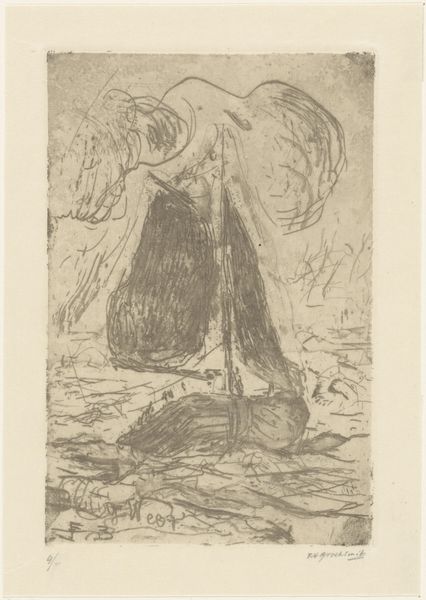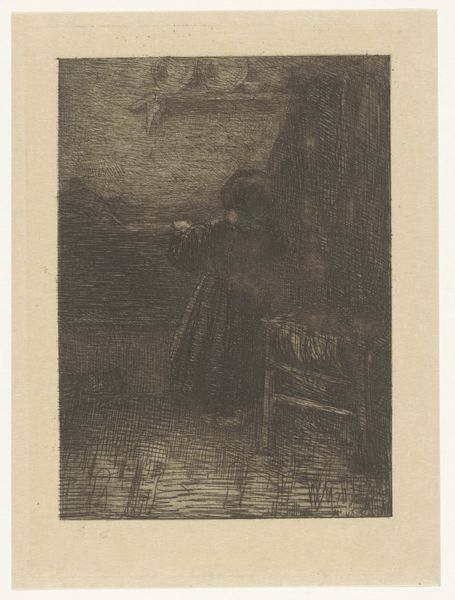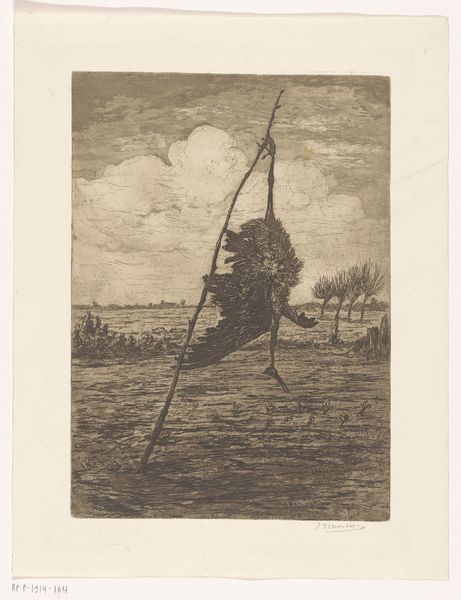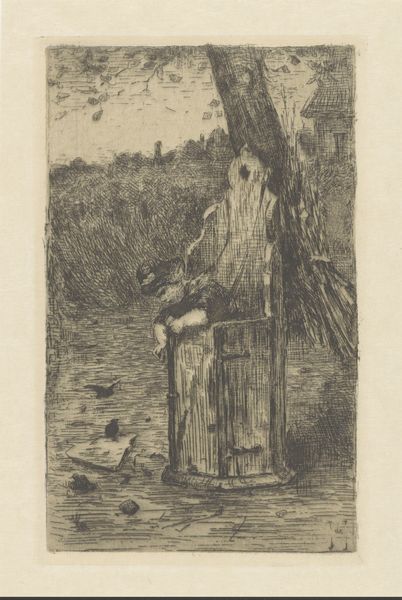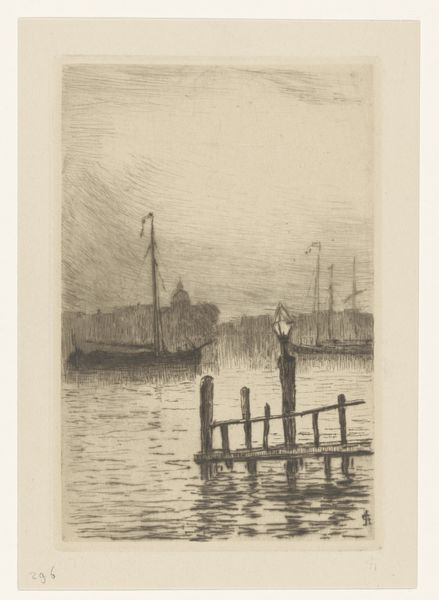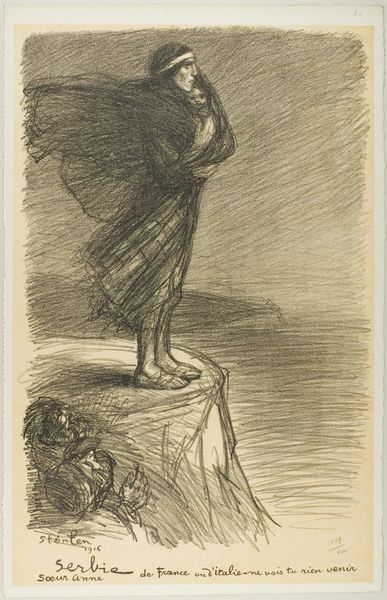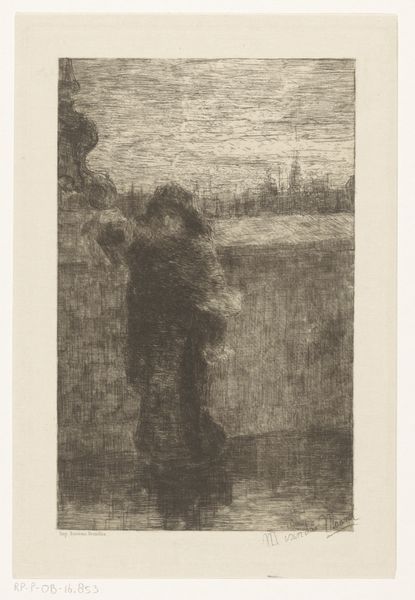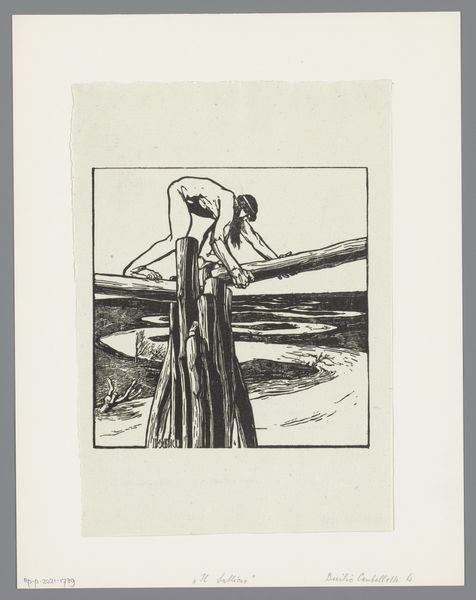
print, etching
# print
#
etching
#
landscape
#
cityscape
#
realism
Dimensions: height 300 mm, width 220 mm
Copyright: Rijks Museum: Open Domain
Editor: We're looking at "Dukdalf bij Dordrecht," an etching by Carel Nicolaas Storm van 's-Gravesande, made between 1884 and 1887. The print shows a wooden structure rising from the water with the city in the background. It's quite somber. How do you interpret this work in its historical context? Curator: This piece offers insight into the public role of art during a period of rapid industrialization. The mooring post, or "Dukdalf," is the central subject, but it also acts as a mediator between the viewer and the evolving cityscape of Dordrecht. Consider how industrial advancements and changes in labor during that era were often depicted in art – either celebrated or criticized. Editor: So, it’s about more than just a landscape; it’s about a society grappling with change? Curator: Precisely. Notice how the artist emphasizes the structure’s roughness and solidity against the delicate rendering of the city. The etching technique, the very process, makes me wonder if it suggests that this sturdy, established mooring is struggling to remain relevant in the face of an ascendant industrial world. Are the birds leaving? What could this suggest? Editor: Maybe it implies the old ways of life are fading? The birds perhaps represent those who are departing. Curator: Exactly! And that connects to a larger discourse about urbanization, the movement of people, and how artistic institutions began displaying works reflecting this sentiment. This image offers a microcosm of these significant societal shifts. The choice of imagery here participates in constructing cultural values. Editor: So, viewing it solely as a pretty landscape would be missing the point entirely? Curator: I would argue, yes, you'd miss the political commentary embedded within. The museum's decision to acquire and display this piece contributes to a larger conversation about national identity and the narrative we tell ourselves about progress. Editor: I see it now. I initially just appreciated the aesthetic. But looking at the historical context provides a much richer, critical perspective. Thank you. Curator: Indeed. It encourages us to investigate the intersection between representation, artistic processes, and power structures.
Comments
No comments
Be the first to comment and join the conversation on the ultimate creative platform.
